Daniil Zamorin wrote this story, but is a native Russian speaker. The ULF has helped Daniil edit his story to be more easily understood by an English-speaking audience. He welcomes people to reach out to him, and the ULF would be happy to facilitate the connection. Please email office@ulf.org to be connected to Daniil.
Hello, my name is Daniil Zamorin (sounds like “Daniel” for English speakers). I was born and raised in Russia in a small town near the capital, Moscow. I’ve been living with my diagnosis for about 7 years now. I do not know why, but I wanted to share the story of my life and illness in particular so that people like me, or people who find themselves in an equally difficult life situation, can say that there is nothing in this world that cannot be overcome. Reading the stories on the ULF’s website, it was painful for me to see that some children died from their variations of the diagnosis. I would like to express my condolences to their families and friends. And it’s also very sad that some ended up in a wheelchair or had to move around on crutches. But I am sure that all these people are strong enough physically and mentally to overcome the life difficulties they face on a daily basis, and perhaps some of them are much stronger than even the healthiest people. And I would like to be closer to the community of people with leukodystrophy and keep in touch with them, perhaps make friends with people like me or with their parents if the sick children themselves cannot communicate because of the diagnosis. And maybe with those who are just interested in me or my story.
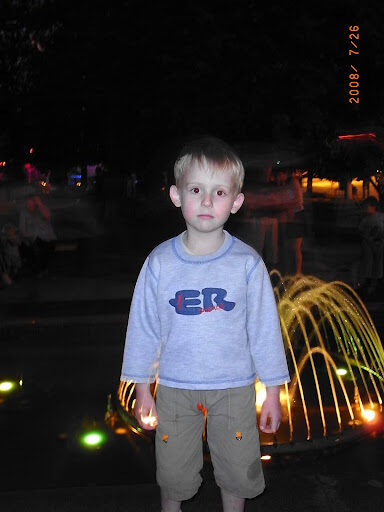
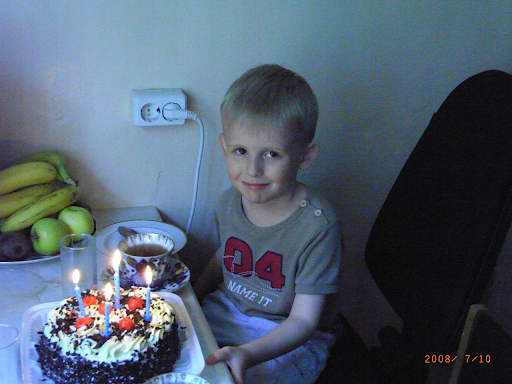
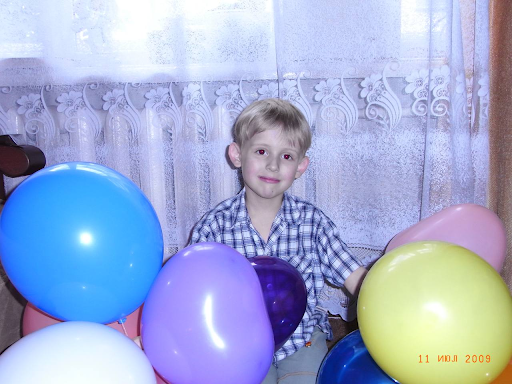
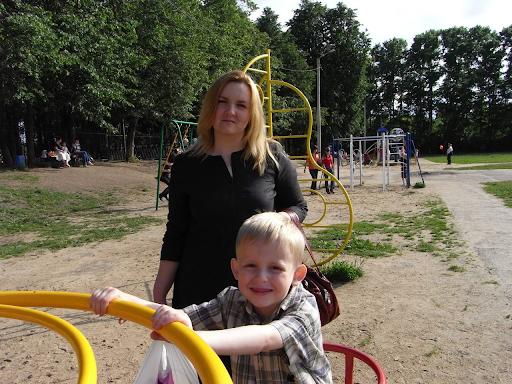
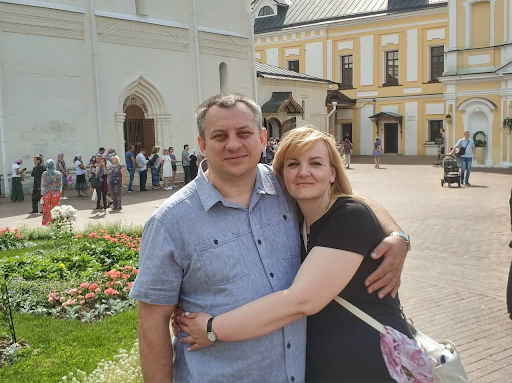




To be honest, I really don’t know where to start the story. Because it’s long enough and painful enough for me. But I’ll probably start by saying that I’m 20 now (born in 2003), and I’ve been diagnosed with leukodystrophy for 7 years.
Up to a certain age, I grew up like an ordinary child. I went to lawn tennis practice, went to school, enjoyed life and overall everything was fine. I communicated with my peers and looked absolutely healthy. And in general, everything in my life was fine.
I first came across this disease at the age of 13, even then I didn’t know about it yet. At that time, my mother, who often kept me company while walking around the city, noticed a change in my gait. She became more shaky, and I also began to stumble more often than healthy people, and in some places I could even fall. At the same time, for me, this change was so insignificant and smoothly flowing that I proved to her that everything was fine with me and I was walking absolutely normally. I felt like I was walking like a healthy person, although from the outside everyone saw that I was limping. That’s why I denied the problems for a while; because I felt the same way I always did except for a little stumbling now and then. But I didn’t feel anything had changed and therefore my walking was that of a normal person. Up to a certain point, she and I believed that these changes were related to adolescence and there was nothing wrong. We thought that everything would go away by itself as soon as I finally got out of the “crisis age” of growing up. But, unfortunately, this did not happen. At the same age, I went to a neurologist. At 13, I didn’t understand what was happening. I was examined, asked to perform some routine actions, and my mother shared her observations with the doctor. I remember when my mom was told that she would have to take me to the hospital for an examination to figure out what was wrong with me. Even though I was old enough, I remember how much I cried then. But there was no special way out, because I had to find out what was wrong with me.
When I was admitted to the hospital as a day patient, I aroused genuine interest among many doctors. No one knew what caused my difficulty walking. I was seen by many doctors, including the one I saw at the reception before going to the hospital. I was asked to walk along the corridors, stairs, etc. I remember how then, unknowingly, I took rubber slippers with me to the hospital to wear instead of my regular shoes to keep the department clean, and on the first day I regretted it because this type of shoe turned out to be absolutely unsuitable for me to wear. After leaving the ward on one of the first days in them, I just didn’t understand how to walk with them which caused me to fall three times within only one corridor. It was painful, but also very annoying. After that moment, I don’t wear any kind of sneakers in the hospital. Because it’s simple, I can’t walk properly in them. But it was a slight deviation from the main story about the difficulties of the early days. Returning to the hospital, I remember being assigned a whole list of examinations. In the end, they took my blood for different purposes, far more than once. They did an MRI of my brain and spinal cord, and an EMNG to determine the response of nerve stimulus in the muscles in my legs. They even took a lumbar puncture thinking that my walking abnormalities might be related to infectious diseases. Let me remind you that I was only 13. And I’m not going to lie about the fact that all these procedures were quite scary for me, especially the lumbar puncture because I just had no idea what was waiting for me during its implementation. I had to grow up quite quickly “mentally”, because I had to keep my face, not cry and not be afraid – at least not to show it to others. My childhood ended instantly for me. After doing a bunch of examinations, they discharged me. They did not dare to make a diagnosis at that time, but after looking at the MRI, and for the changes associated with the white matter (myelin), they wrote in the diagnosis column in the statement: leukodystrophy? After that, with this assumption, my mother was told that she would need to go to the capital where more experienced doctors might be able to accurately determine the diagnosis. And just a week after being discharged from the hospital in my hometown, the whole family went to Moscow in our car.
There we saw a neurologist who was advised to us and after giving me the full range of various examinations performed in my hometown, she confirmed the diagnosis of leukodystrophy and sent us as a family for genetic analysis for the DARS2 gene. Well, the doctor actually hit the nail on the head. It turned out that my father and mother were carriers of the DARS2 genetic variant. I was born sick with a 25% chance, if you believe the description of the disease associated with this gene. There was a 25% chance that I would be healthy, and even a 50% chance that I would just be a carrier. But something went wrong and now my main diagnosis is leukodystrophy based on a mutation in the DARS2 gene, which is also known as LBSL. And now I am writing this article.
Then, after the diagnosis confirmation, I still stayed in the metropolitan hospital for some time so that the doctors would be 100% convinced of it. After discharge, I returned with my family to my hometown. I also returned to school where I started studying while still healthy. Then I began to experience quite great difficulties in communicating with my peers. Since while I was wandering around hospitals with my family, many children had already decided on their small social circles, and unfortunately I did not fit into any of them. Over time, of course, I began to communicate with many people again, with whom I had been in contact before but it was extremely difficult for me. Because of the changes in my gait, I walked much slower than healthy guys. And it got in the way because I couldn’t, like many children, just walk with them from school to home because I didn’t want to make someone wait for me and trail behind. Then I was faced with a depressive period of my life, which in part lasts to this day. I shut myself down, began to communicate less at school and generally became quite secretive. I experienced all these events inside myself quite painfully and tried not to burden anyone with them. Society is quite cruel to those who are not like them, so I felt it for myself.
After graduating from one of the intermediate classes at school, I went back to the metropolitan hospital for a while. IVs, general hospital atmosphere, hospital food, and much more, which was the case in previous times. All of this put extreme pressure on me psychologically. In addition, I have weak veins in general, which are faintly visible on my skin. There were a lot of problems with them. Once a vein simply ruptured when another IV was placed and I lost consciousness. In general, all this was hitting my psyche harder and harder. But I am glad that at that time my mother was with me, who tried in every possible way to support me, even though it was very difficult for her to realize that her child was hopelessly ill.
Returning to school after the hospital. I fell out of society again, and this time even more. Perhaps for me it was also one of the hardest things when you feel completely alone and in a desperate situation. But over time, of course, I began to socialize again, but very, very carefully. If we talk about my daily life, then I had to get used to the new realities of life with a diagnosis. I often fell at school, on the street, at home. I couldn’t walk up the stairs without a support in the form of a railing or at least a wall. And more often than not, I didn’t have to hope for help from the general public. Everyone thought I was just weird. Nevertheless, I am grateful to all the guys who studied with me who helped and supported me, as there were many of them. In the struggle with my diagnosis, I also ended up in a rehabilitation center in my city. No one really had any idea about my diagnosis there. They did a course of physical therapy with me and gave me the same course for home classes, which helped a lot. Physical activity is quite important for me, especially those loads that are directly related to the legs.
Over time, I also received a certificate of disability, which I have to extend throughout the time that I am ill, going through a consultation of doctors over and over again. Honestly, this is not very clear to me, because it is obvious that I will not be cured – at least for now for sure. Speaking of my depressive period, it was still pronounced at that time. I was sad, I cried a lot and constantly thought about why all this happened to me. If anything, it was an extremely difficult time for me as I often looked at healthy people and envied them. Because of my diagnosis, I could no longer do much; not jump, run, or exercise, and regular walking took a lot of my strength.
Eventually, I graduated from the same school where I entered while still healthy. I attended my graduation and even had fun there, although I was not particularly active due to difficulties with walking. I graduated from all 11 grades. I passed the exams and entered the institute, where I am now in my third year.
In everyday life, I still experience the same problems: shakiness walking, problems with coordination, difficulties with stairs, as well as rapid fatigue. My whole life of running around hospitals and so on has left a big imprint on me. By myself, I am quite a nervous person. Today I have a lot of fears: some where I am afraid of falling or, let’s say, not being able to climb the stairs. In fact, in my entire life, I have fallen countless times getting quite a lot of bruises and experiencing not the most pleasant sensations. But every time I got up and walked on and on… after all, I still had the desire to live, despite everything that was happening and my depression. In addition, I have severe problems in winter. Since our winters are quite snowy and overcoming snowdrifts is an impossible task for me. The ice under the snow does not add balance for me. Therefore, in winter, most often my loved ones help me. So that I can continue to go to school like everyone else. Every day I struggle with one or another of the fears from my past, and the fear of meeting new people. Because I’m most often afraid of being rejected by them. But I’m starting to overcome these difficulties day after day.
Now we can say that everything is quite good for me; I am studying successfully, I go to study on my own, except for the winter period. But of course, even in other life periods, walking down the street I can fall or stumble which can be quite painful. But more often than not, someone always helps me get up. Externally, if you look at me, then my illness manifests itself in the form of a slightly stooped back and a different height of shoulders. But if you look at me in everyday photos in isolation from walking, it’s quite difficult to say that something is wrong with me.
It is also worth saying that my diagnosis has also affected my family as a whole. Unfortunately, my mother was quite worried about the news of my diagnosis and it was quite difficult for her psychologically. In 2018 she began to quietly get cancer. At that time, I did not know about it. She decided not to tell me because it was not easy for me with my diagnosis. But in the fall of 2022, I learned about her illness from our mutual psychologist. And on December 2, 2022, she was gone. Which also hit me very hard.
As I mentioned, I’m living a normal life now. Experiencing all the same problems and trying to win them every day. I think that with my story I want to tell people and the people with the same leukodystrophy as me that you should never give up or at least try not to give up. And live, live, live, try and win every day wherever possible. I will be glad to talk to someone. And I hope that we will all definitely find ways to heal. And I want to say thank you to my mom and all that she has done for me, I am very sorry that she is not with me now. And thanks to all the close people who have stayed by my side so far and supported me.
I also think it’s worth mentioning what I consider to be the most difficult for me personally. I think this is the depression that I encountered when I first learned about the disease. The fact is that due to my limited physical abilities, some simple human pleasures, such as walking, require a lot of strength from me. And in winter they are impossible at all, but only if someone close to me will walk with me to help me if anything. I also can’t do sports in its usual sense. But if you look a little deeper, the problem is that I often look at other people and I get sad that, for example, I can’t dance or have fun, just like them because I feel awkward, as if someone will laugh or condemn, although of course most often this will not happen because we in a fairly friendly world… But my depressive mindset often makes itself felt.. In addition, unlike many people, over time I deleted almost all the holidays from my life, such as New Year, Christmas, as well as my own birthday and all the holidays where I would often be invited. This is also a consequence and a trace of the depressive period, I used to love the above-mentioned holidays very much, but now I haven’t celebrated them for 6 years because they don’t bring me joy, because I can’t have fun on them fully, I can’t throw a party and dance until I drop or walk around the city with friends all day going to different places.. But before, as a healthy child, these were my favorite holidays that I looked forward to every time with great impatience.
Therefore, perhaps one of the most difficult things is depression, caused by the realization that you can no longer do something as a healthy person and enjoy it as before….
Therefore, friends, hold on and try to enjoy life to the maximum, even in situations like ours… Of course, if possible…
